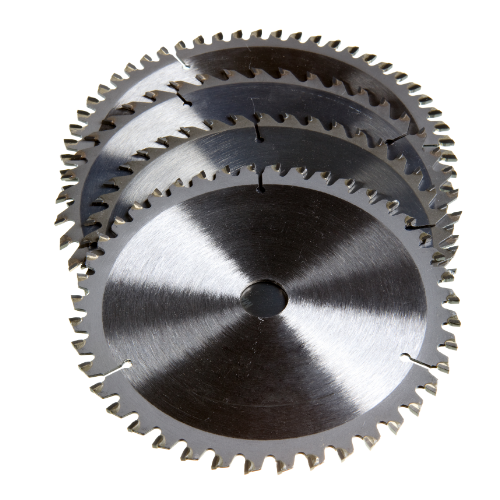When I first started in construction, I remember being frustrated by rough, uneven cuts that ruined good wood. It wasn’t long before I learned that the number of teeth on a circular saw blade could make or break the quality of a cut. Some blades sliced smoothly, while others left splinters everywhere.
If you’ve ever struggled to figure out which blade to use, you’re not alone. I’ve been there too standing in the hardware aisle, staring at all the options and wondering how many teeth I actually needed. Getting it wrong can cost you time, materials, and forbearance.
Over the years, I’ve tested countless blades, learning what works and what doesn’t. In this post, I’ll share what I’ve learned about blade teeth—how they affect performance, which ones to use for different materials, and how to make the right choice for your next project.
Let me take the guesswork out of it for you. Keep reading, and I’ll help you cut with confidence.
Why Is the Right Number of Teeth on Your Saw Blade Important?
Having the right number of teeth on your saw blade is something I’ve learned the hard way over years of hands-on work. Early in my construction career, I ruined good materials and stressed my tools because I didn’t realize how much tooth count mattered. Fewer teeth are great for fast, rough cuts, like ripping through framing lumber, while more teeth make smooth, clean edges on delicate materials like laminate.
The wrong blade can leave splinters, burn marks, or even strain your saw’s motor. But when you match the tooth count to the job, everything works better—you cut faster, save materials, and protect your equipment. Trust me, finding the right blade saves time and frustration in the long run.
How Many Teeth Does a Circular Saw Blade Have?
Over my years in construction, I’ve learned that the number of teeth on a circular saw blade is more than just a number. It’s a key factor that affects how the blade performs. Choosing the right one has saved me countless hours and helped me get the best results. Here’s a breakdown of the three main types of blades I use, and when to choose each one:
1. Low-Tooth Blades (14-40 Teeth)

Purpose: These blades are made for quick, rough cuts, like ripping through lumber along the grain.
Best For: Framing, demolition, or other tasks where speed matters more than precision.
Performance: I’ve found that fewer teeth remove more material with each pass, letting me cut faster, but the edges can be rough.
2. Mid-Tooth Blades (40-80 Teeth)
Purpose: These blades strike a balance between speed and smoothness, making them great for a variety of tasks.
Best For: General-purpose cuts, such as cross-cutting wood or trimming. They’re my go-to for most everyday projects.
Performance: Mid-tooth blades give me cleaner edges than low-tooth ones, while still cutting at a good pace.

3. High-Tooth Blades (80-120+ Teeth)

Purpose: When I need precision and smoothness, these are my blades of choice, especially for fine woodworking or delicate materials.
Best For: Cutting plywood, laminate, or any trim work where clean, splinter-free edges are critical.
Performance: While they cut slower, they deliver the smoothest, most detailed results with minimal tear-out.
How to Check If Your Saw Blade Has the Right Tooth Count Before Cutting
From my years of hands-on experience in construction, I’ve learned that using the right blade for the job can save a lot of time, effort, and material. Here’s how I always make sure my saw blade has the right tooth count before cutting:
- Understand the Material
- First, I always figure out what I’m cutting—whether it’s wood, laminate, metal, or something else.
- I then decide if I need a fast, rough cut or a smooth, precise finish. This helps me pick the right blade.
- Inspect the Blade
- I check the blade’s packaging or markings for the tooth count (like 24T or 60T).
- I match the tooth count to what I need:
- 14-40 teeth: Rough, fast cuts for quick jobs.
- 40-80 teeth: General-purpose cuts, perfect for most tasks.
- 80+ teeth: Smooth, fine cuts for detail work.
- Test on Scrap Material
- Before cutting my main project, I always test the blade on scrap material.
- I look for:
- Speed: The blade should cut without needing to force the saw.
- Quality: I check for splintering, chipping, or burning on the material.
- Ease: The saw should glide smoothly through the material.
- Adjust If Needed
- If the cut is too rough or splintered, I switch to a blade with more teeth.
- If the blade is overheating or cutting too slowly, I try a blade with fewer teeth.
By testing on scrap material first, I avoid mistakes and ensure a clean, perfect cut for my project. It’s a quick step that saves me time and keeps my materials in good shape.
Choosing the Right Tooth Count

After years of hands-on experience in construction, I’ve found that selecting the right tooth count for your circular saw blade is key to getting the job done right. Here’s how I choose the best blade for each task:
- For Speed and Efficiency:
- When I need to make quick, rough cuts and don’t care much about appearance, I reach for a blade with fewer teeth (14-24 teeth). These are great for fast cuts like ripping through lumber.
- For Versatility:
- A 40-tooth blade is my go-to for most projects. It handles a variety of cuts—like cross cutting or trimming—well without compromising speed or smoothness.
- For Precision Work:
- For delicate tasks like finishing carpentry or cutting veneer, I always choose a high-tooth blade (80+ teeth). These blades produce the smooth, precise cuts I need for detailed work.
From my experience, picking the right tooth count can really impact speed, efficiency, and the quality of your cuts. It’s one of those simple choices that can save you ample time
and frustration down the road.
Conclusion
In my experience as a construction expert, the number of teeth on a circular saw blade greatly impacts the quality of your cuts. Fewer teeth are great for fast, rough cuts, while more teeth ensure smoother, more precise edges. For most general tasks, I typically use a mid-tooth blade, but when I need precision, especially for fine woodworking, I always go for a high-tooth blade.
Picking the right blade not only saves you time but also improves your cut quality and protects your tools. Be sure to keep your blades sharp and properly maintained—this will make your work safer, more efficient, and give you better results in the long run.
FAQ
1. What does the number of teeth on a circular saw blade mean?
The number of teeth on a circular saw blade affects how smooth or rough the cut will be. More teeth give you smoother cuts, while fewer teeth allow for faster cuts.
2. How many teeth should a circular saw blade have for cutting wood?
For general wood cutting, a blade with around 40 teeth works well. It gives a good balance of speed and smoothness.
3. Can I use a circular saw blade with fewer teeth for fine cutting?
No, blades with fewer teeth (around 14-24) are better for rough cuts. For fine, smooth cuts, you’ll need a blade with more teeth, like 60-80.
4. How does the number of teeth affect cutting speed?
Blades with fewer teeth cut faster because they remove more material with each pass. However, they leave rougher edges.
5. Can a high-tooth blade cut through thicker materials?
A high-tooth blade (80+ teeth) provides smoother cuts but may cut slower, making it less efficient for thick, rough materials.
6. What blade should I use for plywood or laminate?
For cutting plywood or laminate, a blade with a higher tooth count (60-80 teeth) is best because it gives a smooth, clean edge without splintering.
7. How do I know if my circular saw blade has the right number of teeth?
Check the blade’s label or packaging. It should indicate the number of teeth, which will help you choose the right one for your project.
8. Can I use a circular saw blade with a higher tooth count for general cutting?
Yes, but high-tooth blades are slower and better for precision work. For general cutting, a mid-tooth blade (40-60 teeth) is often more efficient.
9. Does a blade with more teeth last longer?
Not necessarily. While more teeth can result in smoother cuts, they can wear down faster if used on tough materials. Proper maintenance is key to prolonging blade life.
10. Can I use a circular saw blade with more teeth to cut metal?
While you can use blades with more teeth for metal, it’s better to use a blade specifically designed for metal. Metal-cutting blades often have fewer teeth and are made from stronger materials.

